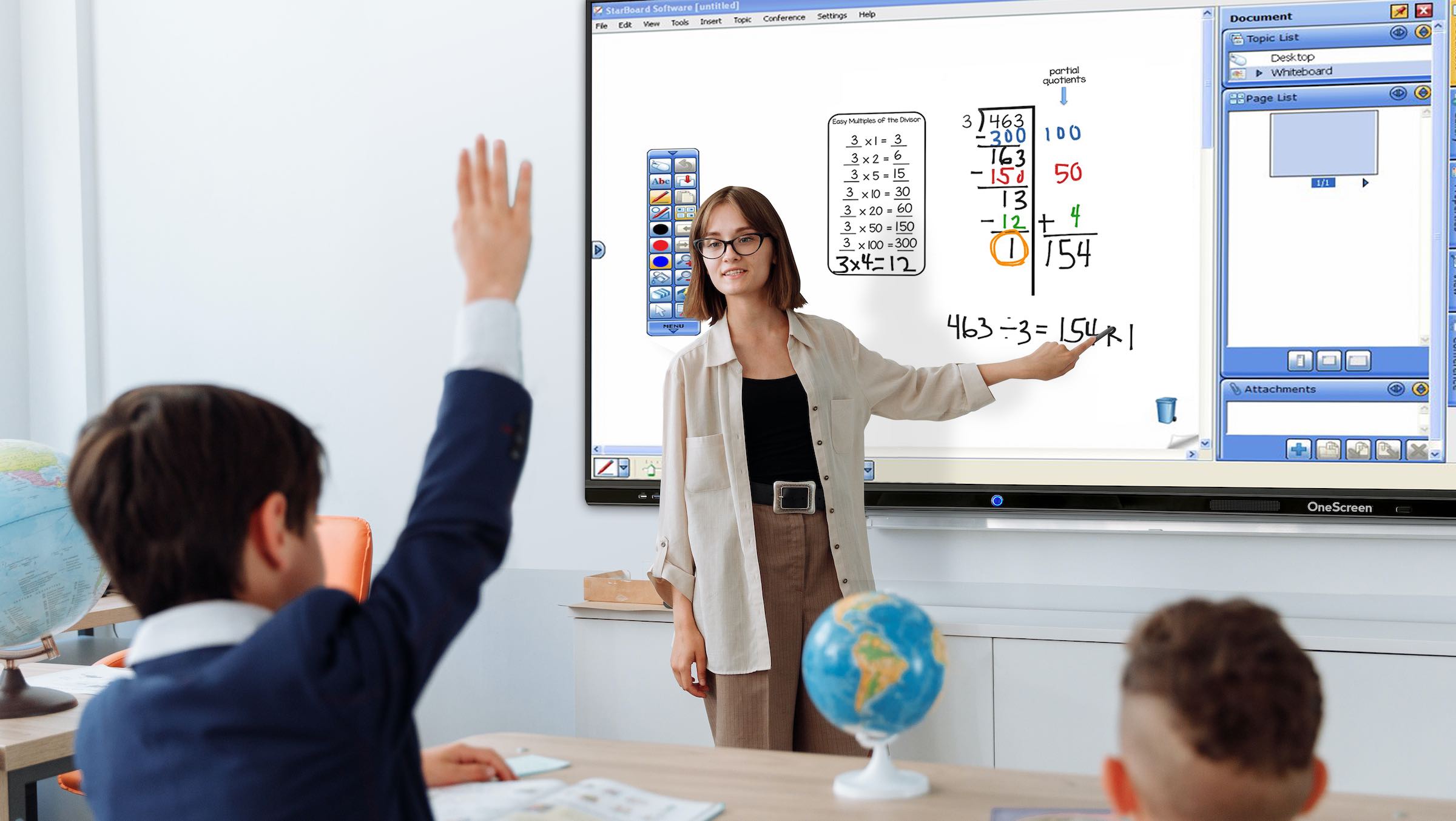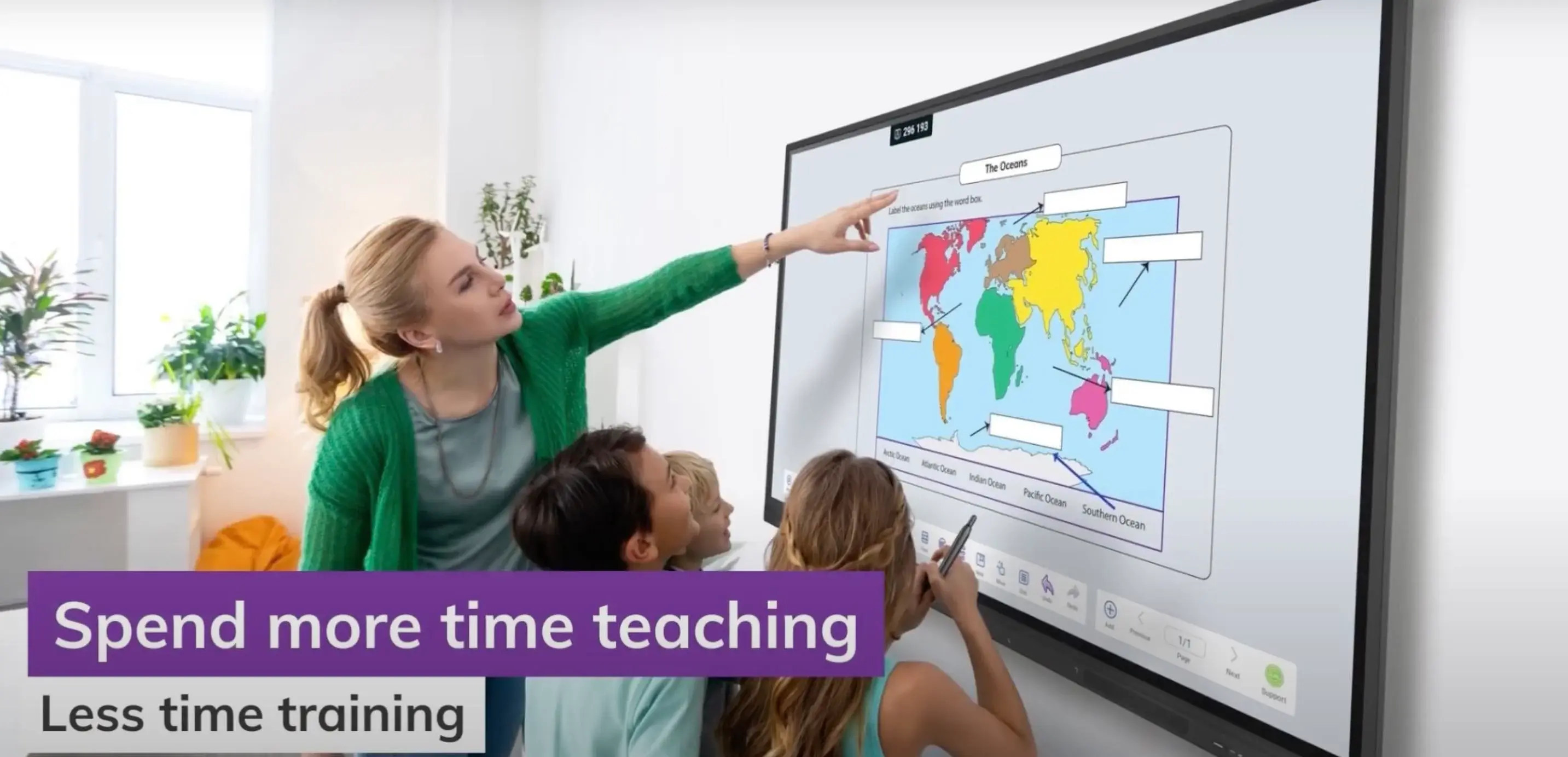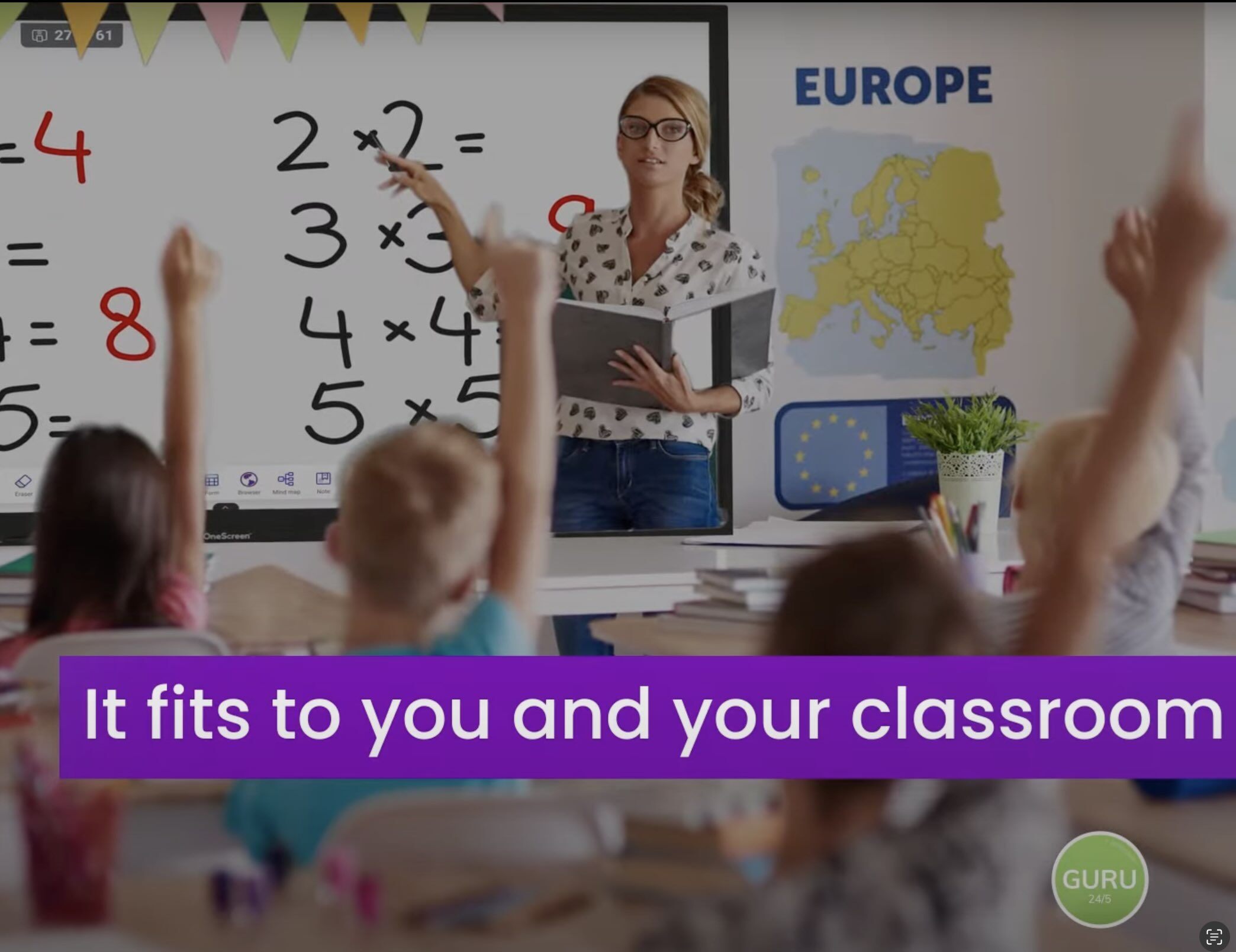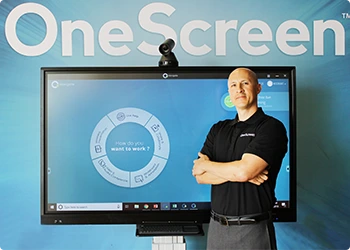
Benefits of Tech in the Classroom
In recent years, the need for the right technology in the classroom has grown dramatically. Initially, school staff were resistant to change for several reasons - teachers didn't want to spend additional time learning new systems, IT was wary of supporting it, and traditionalists suggested reducing screen time in the classroom, note-taking on devices and really, anything that ventured beyond the prototypical paper, pencil, and textbook.
How Can Admin Justify EdTech Cost To Colleagues
Today, and increasingly so, the use of smart screens, devices, and entire virtual classrooms are integral to the contemporary learning experience. According to BuiltIn, 92% of educators recognize the importance of EdTech and its impending impact on years to come.
The question is: How can an administrator justify the investment in technology to colleagues, educators and IT staff who are reticent? It begins with showing them how valuable the right technology can be in their daily lives.
For a start, you can point out that schools are responsible for providing students with an education that reflects the world around them and prepares them for the future. In many ways, the use of technology in the classroom is imperative to both introducing the shape of modern society and providing them with the best possible tools to learn effectively.
5 Benefits of EdTech in the Classroom
1. Tailor lessons to various learning styles.
Children learn best in vastly different ways. Some students are tactile learners, some are auditory learners, while others learn better visually or through reading and writing. Smart screens allow for students to engage each and every learning style through offering a myriad of options in which students can participate. It offers something students can physically touch and interact with, captivate them visually, put auditory skills to use with dictation, while also encouraging students to read and write. Through incorporating each style of learning individually, and more importantly, giving students the option to learn how they learn best, students are set up for success.
2. Foster a more collaborative learning environment.
Educational technology affords students the opportunity to interact with each other in a collaborative way. Through being continuously connected with one other, students can tap each other for assistance anytime, anywhere and work together in ways they couldn’t previously. As a result, students are naturally encouraged to contribute more freely and openly with their peers. This allows for greater productivity, as well as cultivates excellent communication and team-building skills. Furthermore, collaboration among students is not limited by location with the use of technology — which is a vital contributing factor to the success of remote learning environments.
3. Promote stronger student engagement.
Perhaps the most difficult task for teachers is keeping their students engaged. Short attention spans are by far one of the classroom’s greatest caveats. But the use of EdTech offers much more dynamic tools which can keep students focused and ready to learn. Exciting visuals bring traditionally dull subjects to life and animate lessons, while the ability to engage with screens in an interactive and communal way keeps students interested in the subject at hand. Virtual field trips breathe life into cold, rainy days. Video clips on a new topic make for an unforgettable presentation. Multimedia quizzes and educational games have the power captivate an entire classroom, whether in-person or remote. The possibilities are endless.
4. Ease the burden on educators.
We would be remiss not to factor in the positive implications that a technologically advanced learning environment has for educators — teachers matter too! Anyone in the field of education is all too familiar with the countless hours spent making copies, annotating students’ work, grading, filing, lesson planning — the list goes on. Technology alleviates painstaking labor, giving teachers a central, digital hub for all things work-related. The use of technology makes it easier to share resources with students, grade automatically, keep things organized, and spend more time and energy on the things that really matter in the classroom without needlessly drowning in piles of paper.
5. Introduce a future-forward curriculum.
It’s no secret that the “real world” is one steeped in technology. In fact, it permeates every aspect of professional life. What students learn in the classroom should mirror that reality, equipping students with the tools necessary to succeed in the future. Students need proficient technological skills in order to be prepared for higher education and subsequently, their careers — it’s a non-negotiable. Even the most basic activities on a smart screen, laptop, or iPad can help students gear up for disciplines such as graphic design, programming, engineering, and business. It can help jumpstart creative passions and illuminate technology-specific talents from an early age, as well as fine-tune specific skillsets as students advance in their curriculums. When it comes down to it, a mastery of technology is a fundamental of future success.
Educators have the unique responsibility of affording today’s students with the best opportunities available, equipping them for future success in a way that no one else can. When we take a deeper look at the ways in which EdTech can bolster success in every aspect of students’ — and educators’ — lives, the fear response to advancing technology fades, and it becomes apparent that it is merely a tool, and worthy investment, by which we can shape even better, brighter minds.




 Get a live demo now!
Get a live demo now!


